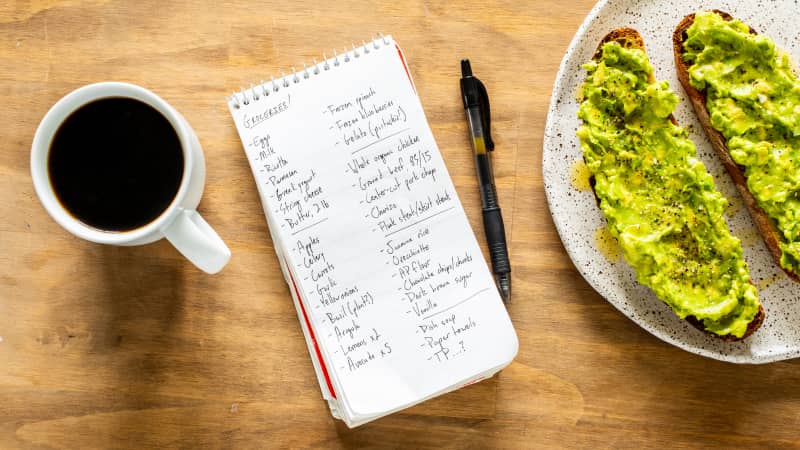A great grocery list is a powerful tool. Written carefully, it can reduce the number of visits to the grocery store, make those visits shorter, and keep you from disappointment when you get home. These days, it seems more important than ever to have a great one.
How To Write a Great Grocery List
Published May 26, 2020.

Many people use feature-heavy apps for their grocery lists, and they love them. (We have a good one for you to consider!) But me, I'm a pen and paper kind of guy. It's just easier and faster for me to glance at a piece of paper than tap at my phone. And time is of the essence, these days especially.
Your grocery list should be complete, precise, and intuitive. The goal is efficiency. Here are some rules I follow.
1. KNOW WHAT YOU ALREADY HAVE
To know what you need, you must first know what you already have. Really. Take a careful, complete stock of your kitchen storage. There may be stuff lurking in the back of your freezer or pantry that you haven't seen in a while. Take it out, look at it. If it's bad, get rid of it. And be honest with yourself. If you're not going to use it, ditch it or donate it (so long as it's not perishable or expired). You'll need that space for fresh stuff.
2. PLAN FOR SPECIFIC RECIPES
Identify a handful of recipes that you will for sure make in the next few days. Study the ingredient lists and mark down the ingredients that you will need.
3. IDENTIFY PERENNIAL ITEMS AND EXTRAS
Identify those items that you just want to have around for snacking or non-recipe meals (fresh fruit, sandwich ingredients, easy breakfasts, etc). Mark these down. Add two extra things for fun.
4. ORGANIZE LIST, ROUND ONE
Now, fresh sheet of paper. Organize the items by category. Produce, meats, dairy, dry goods, frozen items, whatever. Group similar things together. Edit.
5. ADD "PLAN B" ITEMS
Your store may be out of the exact ingredient you are looking for. You need contingency plans. For marquee purchases like meat, vegetables, cheese, and other key ingredients, consider adding a backup item. If they don't have the exact pork chops you want, is there another cut you can choose? Identify it ahead of time so you don't lose focus at the store. You don't want to wander the aisles aimlessly, and you don't want to come home empty handed.
6. ORGANIZE, ROUND TWO
Visualize your grocery store. Think hard. Maybe even draw up a rough schematic. What is the route you take to get through it? Do you enter and go directly to the left? Or do you go to the right? Re-organize your list based on where the items on your list are located. If you don't know, dig deep to make an educated guess. You want to avoid backtracking as much as possible.
7. STAY ON TASK AT THE STORE
We'll have time to browse leisurely again soon enough. But now especially, you want to limit the number of visits you make to the supermarket, the amount of time you spend there, and the amount of contact you make with others. Stay focused. Oh, and if you're a pen-and-paper shopper like I am, don't forget a pen, to cross off items as you find them. Toss that list when you're done.
8. MOST IMPORTANTLY
Get good stuff! Make yourself something good to eat! You deserve it. If anything can help us get through this, it's delicious food.
For more cooking resources and recipe recommendations, check out these posts:
- Practical Home-Cooking Resources You Can Count On
- 9 Recipes That Use 10 or Fewer Ingredients That You (Probably) Already Have
- 25 Baking Recipes From Cook's Country That Are Made with Pantry Staples
- 5 Cozy Cooking Projects
- 29 Great Project Recipes From America's Test Kitchen That You Should Make In Your Spare Time